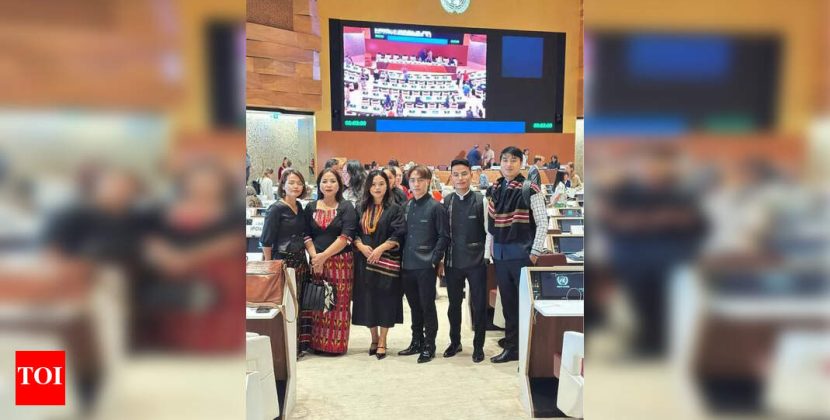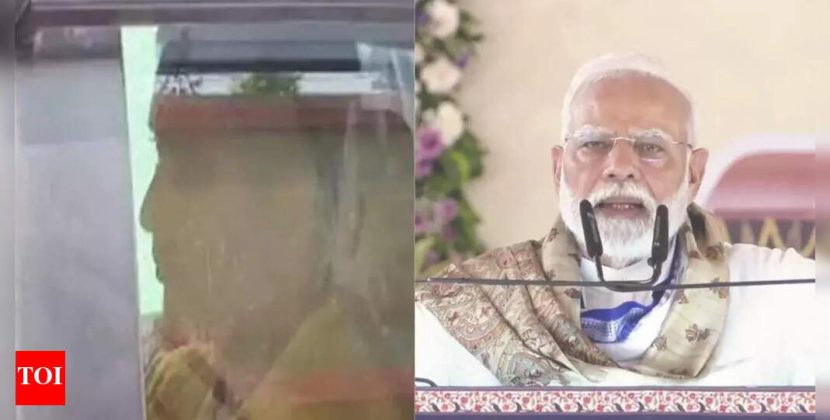An Indian naval officer has conceded that the country lost fighter jets to Pakistani fire during their conflict in May and says the losses were a result of “constraints” placed on Indian forces by the government in New Delhi.
Captain Shiv Kumar, defence attache at the Indian embassy in Jakarta, made the comments at a seminar in Indonesia on June 10. The remarks went largely unnoticed at the time until The Wire, an Indian publication, reported on them on Sunday.
Kumar’s claims have sparked a political storm in India, where the opposition Indian National Congress party called them an “indictment” of Prime Minister Narendra Modi’s government.
So what did Kumar say, how have the Indian government and opposition responded, and what happened between India and Pakistan on May 7?
What happened between India and Pakistan on May 7?
Tensions between India and Pakistan escalated into a military confrontation on May 7 when India launched Operation Sindoor, targeting nine sites in six cities in Pakistan and Pakistan-administered Kashmir with multiple missile attacks.
India said it hit “terrorist infrastructure” in response to the killings of tourists on April 22 in Pahalgam in India-administered Kashmir. Pakistan, on the other hand, said dozens of civilians were killed in the missile attacks along with several military personnel.
Islamabad said it downed six Indian jets in retaliation, including at least three Rafale fighters. Pakistan military spokesperson Ahmed Sharif Chaudhry said all the planes were downed inside Indian territory. An information war also ensued, in which India and Pakistan traded conflicting allegations and claims, but they both agreed on one fact: Aircraft from neither side crossed into the other’s territory during the attacks.
In subsequent days, the nuclear-armed South Asian neighbours exchanged tit-for-tat missile strikes and drone attacks on each other’s territory until a ceasefire was reached on May 10. It was announced by United States President Donald Trump, who insisted he brokered it – a claim New Delhi rejects. India insisted all its disputes with Pakistan must be settled bilaterally and there is no room for third-party involvement.
What has the Indian naval attache in Indonesia said?
During the seminar organised by Air Marshal Suryadarma University in Indonesia, Kumar said he “may not agree [with an earlier Indonesian speaker’s claim] that we lost so many aircraft, but I do agree we did lose some aircraft”.
Kumar added: “That happened only because of the constraints given by the political leadership to not attack the military establishment or their air defence” on May 7.
The naval attache said the Indian military subsequently changed tactics and began to target Pakistani military installations.
“We first achieved suppression of enemy air defences, and then that’s why all our attacks could easily go through using Brahmos missiles,” Kumar added.
The Brahmos, a product of an Indian-Russian joint venture, is a long-range missile. Indian media reported that India fired Brahmos missiles at Pakistani airbases on the night of May 9-10.
What has India previously said about the fighter jets?
After Pakistan first said it had shot down six Indian jets on May 7, New Delhi did not officially confirm or deny those assertions.
When Chinese state news outlet The Global Times reported that Pakistan had brought down the Indian fighters, the Indian embassy in China described it as “disinformation”.
But subsequently, Indian officials started to suggest that they had lost planes.
When asked by reporters on May 11 whether Pakistan had managed to down Indian jets, Indian Director General of Air Operations AK Bharti said: “We are in a combat scenario, and losses are a part of it. As for details, at this time, I would not like to comment on that as we are still in combat and give advantage to the adversary. All our pilots are back home.”
Then, General Anil Chauhan, India’s chief of defence staff admitted that Indian jets were downed by Pakistan, without specifying the number of jets, during interviews on the sidelines of the Shangri-La Dialogue security forum in Singapore, which took place May 30 to June 1.
Chauhan’s acknowledgement, made during interviews with the Reuters news agency and Bloomberg TV, marked the first time an Indian official admitted that Indian jets were shot down. “What was important is why did these losses occur and what we’ll do after that,” Chauhan said.
When a Bloomberg reporter asked Chauhan about Pakistan’s claims that six Indian jets were downed, Chauhan responded that this information was incorrect. He added that “what is important is … not the jets being downed but why they were downed”.
Chauhan said India “rectified tactics” after the May 7 losses and then “hit airbases deep inside Pakistan, penetrated all their air defences with impunity, carried out precision strikes” before the May 10 ceasefire.
How has the Indian government responded to Kumar’s comments?
In a statement posted on its X account on Sunday, the Indian embassy in Indonesia said: “[Kumar’s] remarks have been quoted out of context and the media reports are a mis-representation of the intention and thrust of the presentation made by the speaker.”
The embassy said that in the presentation, Kumar explained that Operation Sindoor was launched to target “terrorist infrastructure” and the attache was trying to emphasise that the Indian response was deliberately not escalatory.
“The presentation conveyed that the Indian Armed Forces serve under civilian political leadership unlike some other countries in our neighbourhood,” it added in a barb at Pakistan, where the military is the most dominant institution.
Is this a shift in India’s position?
Not really. While neither the Indian government nor the military has ever bluntly linked the loss of jets to the Modi administration’s orders to the armed forces on May 7, New Delhi has been consistent in its narrative over its objectives that day.
In a media statement after India launched missiles on May 7, Foreign Secretary Vikram Misri said the actions of India’s military “were measured, nonescalatory, proportionate and responsible”.
Colonel Sofia Qureshi of the Indian army, who accompanied Misri to the briefing, emphasised that “no military establishments were targeted”.
After the ceasefire, Indian Foreign Minister S Jaishankar told reporters that before firing at Pakistan on May 7, New Delhi had “sent a message to Pakistan that we are firing at terrorist infrastructure, we are not striking at the military, so the [Pakistani] military has the option of standing out and not interfering in this process”.
“They chose not to take that good advice,” Jaishankar said.
The Indian government argued that the Pakistani military’s response to New Delhi’s May 7 attack forced it to also retaliate, culminating in the missile exchanges on May 10.
Why has this reignited the row with India’s opposition party?
The main opposition Congress party has been asking Modi’s Bharatiya Janata Party government to inform parliament about India’s air losses during the conflict.
When Chauhan admitted Indian planes were downed, Congress members demanded a review of India’s defence preparedness.
“There are some very important questions which need to be asked,” Congress leader Mallikarjun Kharge wrote in an X post at the time. “These can only be asked if a Special Session of the Parliament is immediately convened.”
Kumar’s remarks have revived those calls.
“The Modi government has misled the nation from the start – failing to disclose the aircraft losses during Operation Sindoor,” Congress leader Pawan Khera wrote on X on Sunday, calling the comments by Kumar an “indictment” of the government.
“No wonder they are ducking our demand for a Special Session of Parliament like the plague. They know they’ve compromised national security, and they’re terrified of what the Congress Party will expose before the people of India,” Khera wrote.
Another Congress leader, Jairam Ramesh, posted on X on Sunday: “Why is the PM refusing to preside over an all-party meeting and take the Opposition into confidence? Why has the demand for a special session of Parliament been rejected?”
What sparked the May conflict?
On April 22, a group of armed men killed 26 people – almost all of them tourists – in Pahalgam, a popular tourist destination in India-administered Kashmir. An armed group called The Resistance Front (TRF) claimed responsibility for the attack.
New Delhi insisted that the TRF is an offshoot of another Pakistan-based armed group, Lashkar-e-Taiba (LeT), and has blamed Pakistan for supporting such groups. Islamabad denied the allegation and called for a neutral inquiry into the attack.
After the Pahalgam attack, the already dwindling relationship between the neighbours worsened. Pakistan and India scaled back their diplomatic engagement, suspended their participation in bilateral treaties and expelled each other’s citizens.




















Comments